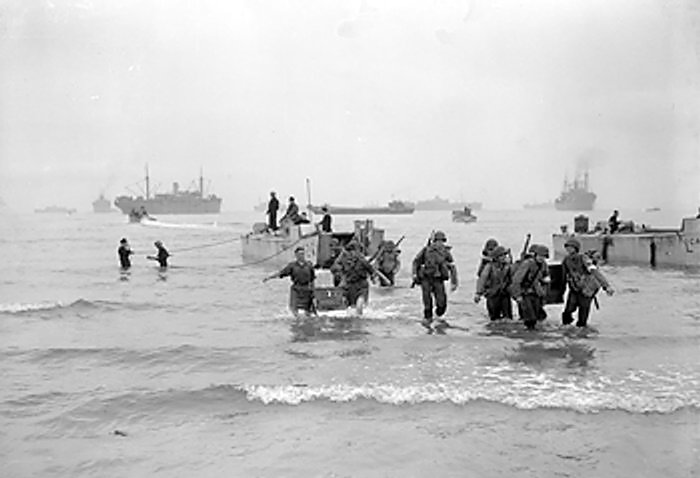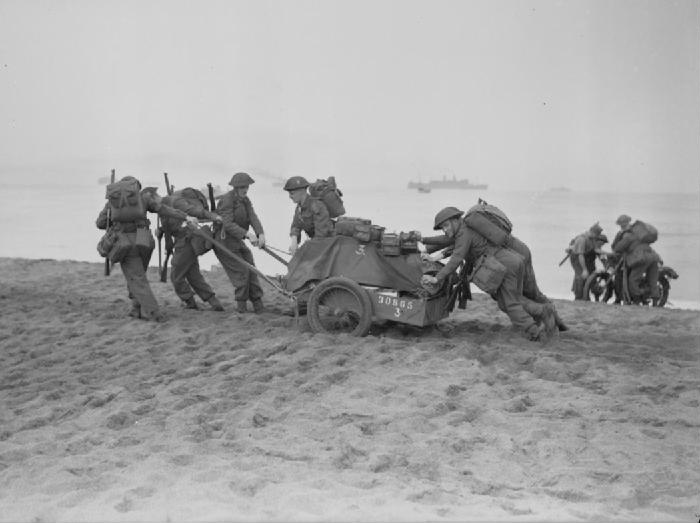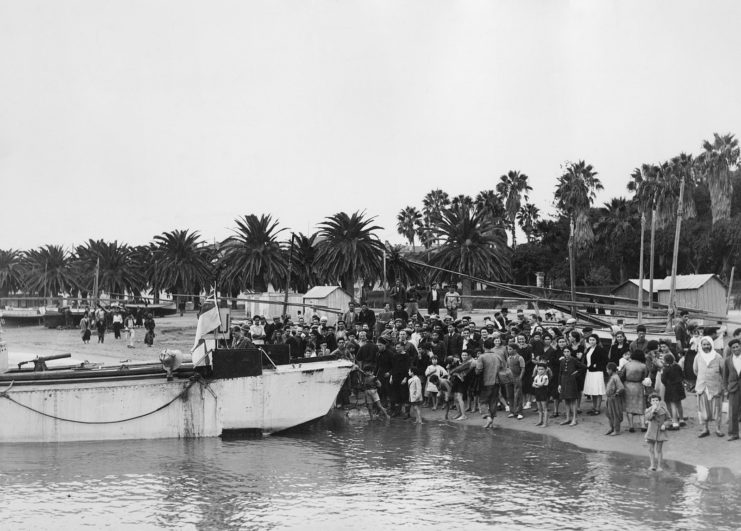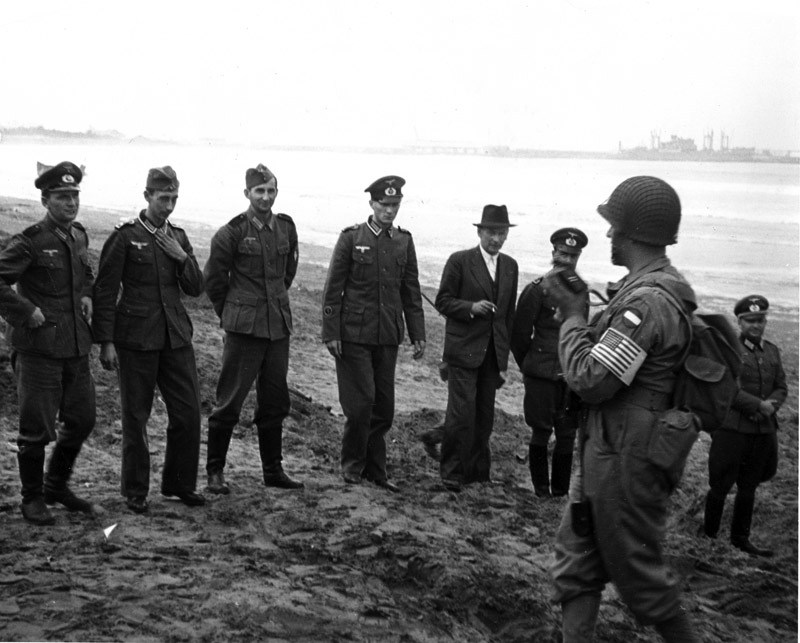On November 8, 1942, Allied forces launched Operation Torch. Primarily an American undertaking, it was the beginning of a new phase in WWII – one in which American troops fought on the ground in North Africa.
For the Americans, it was a tense moment. Most of them had never seen combat. They did not know how they would be received by the Vichy French occupying the region.
As they approached the African coast in landing craft under cover of darkness, one of their three targets was the area around Algiers.
Troubled Landings
For the 168th Combat Division, an infantry force taking part in the landings, getting to the right beach proved tougher than expected.
A British submarine was waiting for them just off the coast of their landing beach. They were meant to find the correct beach by steering their landing craft through the darkness toward the lights of the submarine. However, lights from houses and cars on land confused the men steering the landing craft. Troops became scattered up and down the coast, some returning to their craft and setting back out to sea to find the right place.
Once the craft had unloaded their cargo of soldiers, they returned to the waiting ships to fetch more. A thick fog prevented them from finding the troop transports and caused delays in bringing more troops ashore.

Meeting the French
Meanwhile, a small group of French officers was taking an incredible risk. Their country had surrendered to the Germans and they were officially allied to the pro-German Vichy regime. However, General Mast had secretly met with the Americans before the invasion. He had agreed that, together with other pro-Allied officers, he would detain pro-German officials and leaders on the night of the attack.
As a result, many Americans met friendly French troops who celebrated their arrival. Many met General Mast as he drove back and forth, trying to ensure the invasion went smoothly.
General Mast’s superiors had sent out commands countermanding his order to his men to surrender. In some places, the Allies faced a fight.
Seizing the Port
One of the most important parts of the invasion was capturing the port of Algiers. It had to be done quickly so pro-Axis forces could not sabotage the facilities there.
Two British destroyers loaded with American infantry steamed toward the port. After two failed attempts, one of them managed to break through the barrier at the harbor mouth and unload its troops onto the docks.
A bombardment from inside the port forced the ship to head back out to sea. Left alone at the docks, the infantry engaged in a fierce firefight with Senegalese troops backed by tanks. After hours of fighting, and with no support in sight, the Americans surrendered.

The Guns of Cap Matifou
East of Algiers, the British 1st Commando and a platoon of the American 34th Division made their landing. Their task was to destroy two coastal gun emplacements at Cap Matifou.
The British seized the first emplacement, but the Americans became pinned down outside the other fort. The British moved up to support them and, as the sun rose, called in bomber support. With the pressure mounting, the doors of the fort swung open. The Allies rushed in, seizing control.
The Troops from the Thomas Stone
Hours before, things had started to go wrong for the other soldiers who were due to land near Cap Matifou. A torpedo had hit the USS Thomas Stone, leaving it dead in the water 155 miles from Algiers.
The ship carried 1,400 assault troops. Their commander got 800 of them into landing craft and sent them to their target. The vessels were in no state for such a long journey; they took on water and ran out of fuel. They had to be abandoned and the troops picked up by a Corvette. They arrived 20 hours late for the invasion.
U-Boats Attack
Back on the Algerian coastline, German bombers, torpedo planes, and U-boats were attacking the Allied ships. U-331 hit the USS Leedstown with a deadly torpedo strike that left the ship sinking. Fortunately, most of the men and supplies on board were rescued.
The attacks would have been far worse if not for Allied anti-submarine and false intelligence efforts. They had persuaded the Germans the assault was coming a hundred miles further down the coast. Most of the submarines were in the wrong place.

El Biar
West of Algiers, American troops landed to find friendly locals calling out “Vive les Americains!” The warm reception did not extend to everyone. Just outside the town of El Biar, they ran into resistance. There they encountered the ordeal of street fighting against infantry and armored vehicles.
Some troops traveled on past El Biar toward Algiers, not letting the advance get bogged down. Others moved past the town to tackle Fort L’Empereur. Major Chanson, the French officer in charge of the Fort, was willing to surrender – but only to an American. However, he had to negotiate with a British officer.
Negotiating the End
General Ryder, the man in charge of the invasion, went ashore. Together with an American diplomat, he traveled to El Biar, where he negotiated a ceasefire with a French general.
It was not quite the end of French resistance to the Allies in Algiers. Admiral Darlan, the most senior French officer in the region, was in an awkward position, caught between Axis and Allies. It took two weeks to obtain a formal surrender.
By then the fighting with the French had ended. The Americans held Algiers. It was time to move on and fight the real enemy.
Source:
Orr Kelly (2002), Meeting the Fox: The Allied Invasion of Africa, from Operation Torch to Kasserine Pass to Victory in Tunisia
